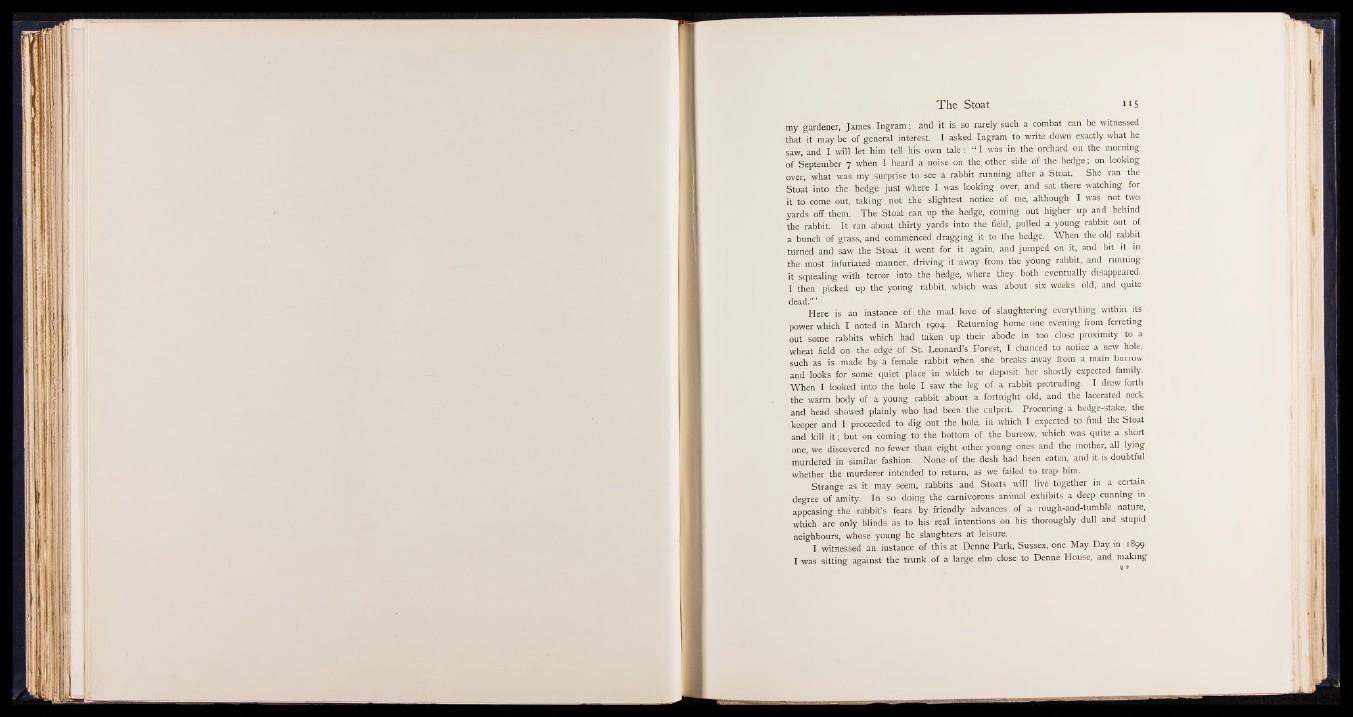
my gardener, James Ingram; and it is;,ft© rarely such a combat .can be witnessed
that it may be of general interest. I asked Ingram 11 write down exactly what he
saw, and I will let him tell his own tale: “ I was in the orchard on the morning
of September 7 when I heard a nigse ,on, the other side of the hedge; on looking
over, what was my surprise to see a rabbit running after a Stoat. She ran the
Stoat into the hedge just where I was looking: over, and sat there watching for
;i{: to come out, taking not the slightest notice of me, although I was not two
yards off them. The Stoat ran up the hedge, coming out higher up and behind
the rabbit. It ran about thirty yardsrijnto the field, pulled a young rabbit out of
a bunch of grass, and commenced dragging it to the hedge. When the old rabbit
turned and saw the Stoat it went f i^ ji t again, and jumped oh it, and bit it in
the most infuriated manner, driving it away from the young rabbit, and running
it squealing with terror into the hedge, where they both eventually disappeared.
I then picked up the young rabbit, which was about six weeks old, and quite
dead.” ’
Here Ifla n instance of the mad love of slaughtering everything within its
power which I noted in March 1904. ReturningSome one evening from ferreting
out some rabbits which had taken up their abode in too | H proximity to a
wheat field on the edge of St. Leonard’s Forest, I chanced to notice a new hole,
such as is made by a female rabbit when .she breaks away from a main burrow
and looks for some quiet place in which to deposit her shortly expected family.
When I looked into the hole I saw the leg of a rabbit protruding. I drew forth
the warm body of a young rabbit about a fortnight old, and the lacerated neck
and head showed plainly who had been the culprit. Procuring a hedge-stake, the
keeper and I proceeded to dig out the hole, in which I expected to: find the Stoat
and kill it ; but on coming to the bottom of the burrow, which was quite a short
one, we discovered no fewer than eight other young ones and the mother, all lying
murdered in similar fashion. None of the -flesh had been eaten, and it is doubtful
whether the murderer intended to return, as we failed to trap him.
Strange as it may seem, rabbits and Stoats will live together in a certain
degree of amity. In so doing the carnivorous animal exhibits a deep cunning in
appeasing the rabbit’s fears by friendly advances of a rough-and-tumble nature,
which are only blinds as to his real intentions on his thoroughly dull and stupid
neighbours, whose young he slaughters at leisure.
I witnessed an instance of this at Denne Park, Sussex, one May Day in 1899.
I was sitting against the trunk of a large elm close to Denne House, and making